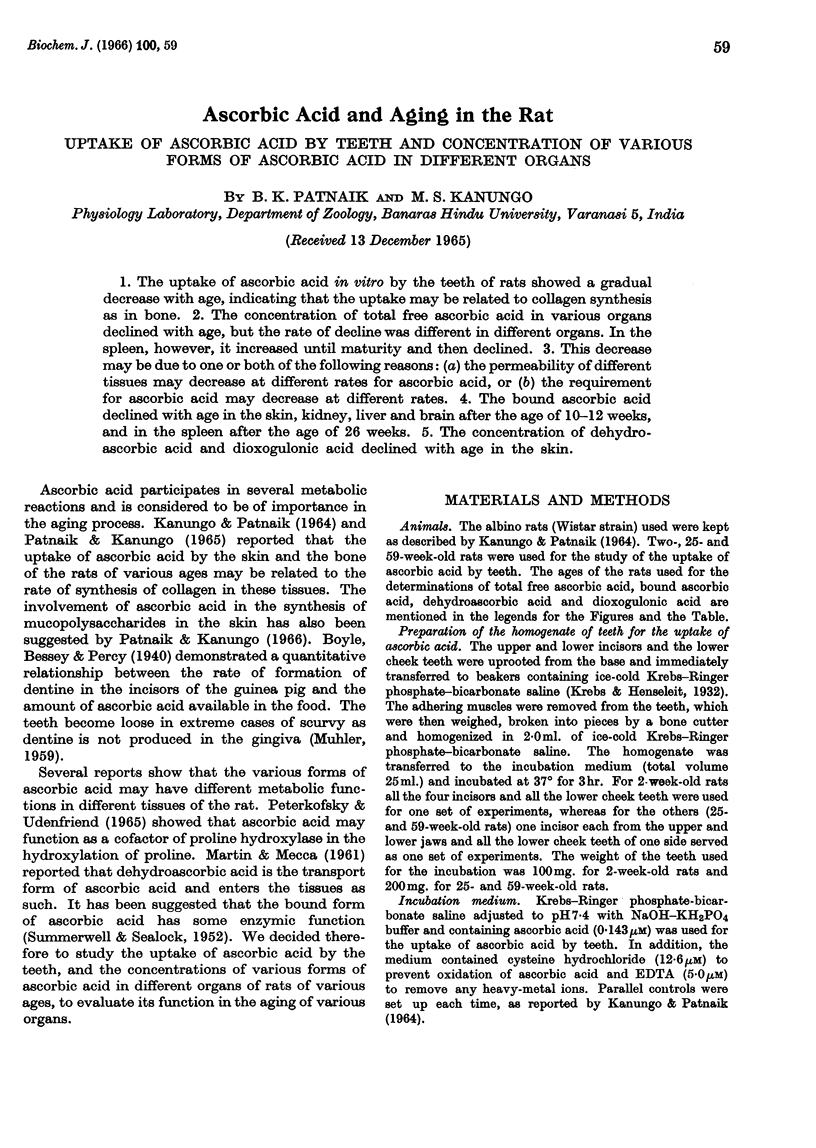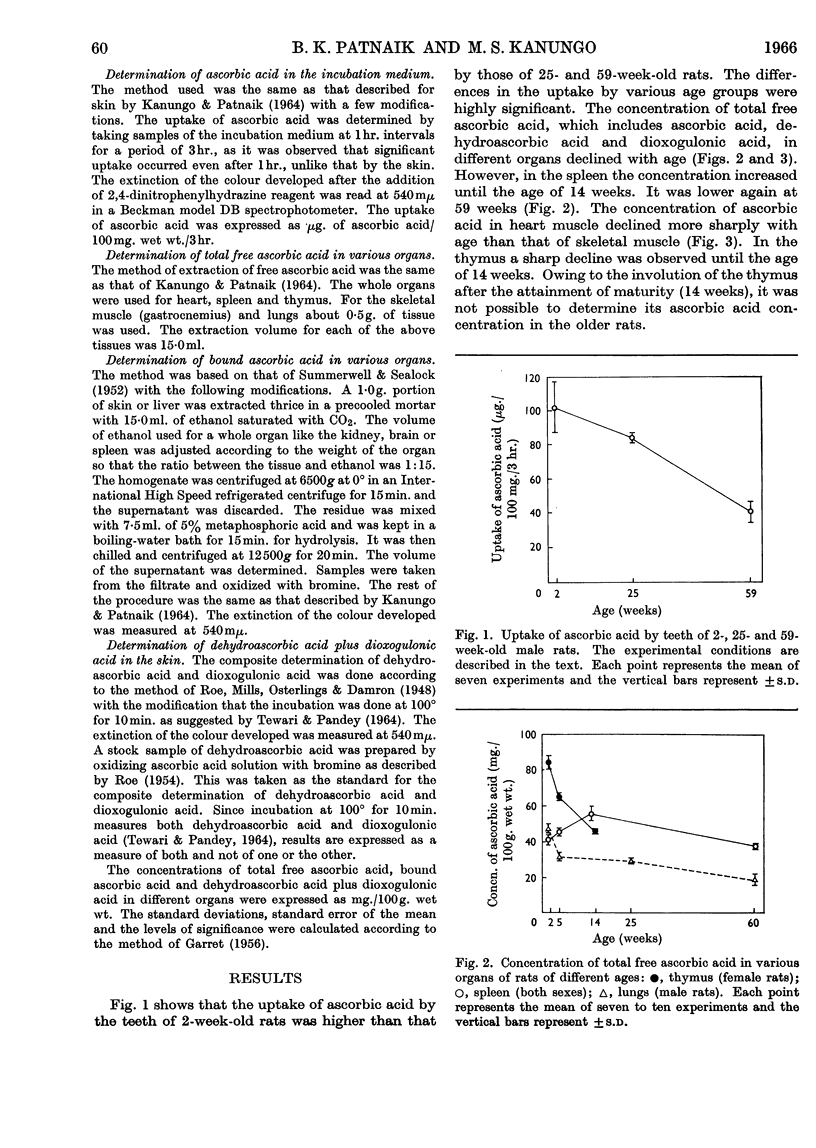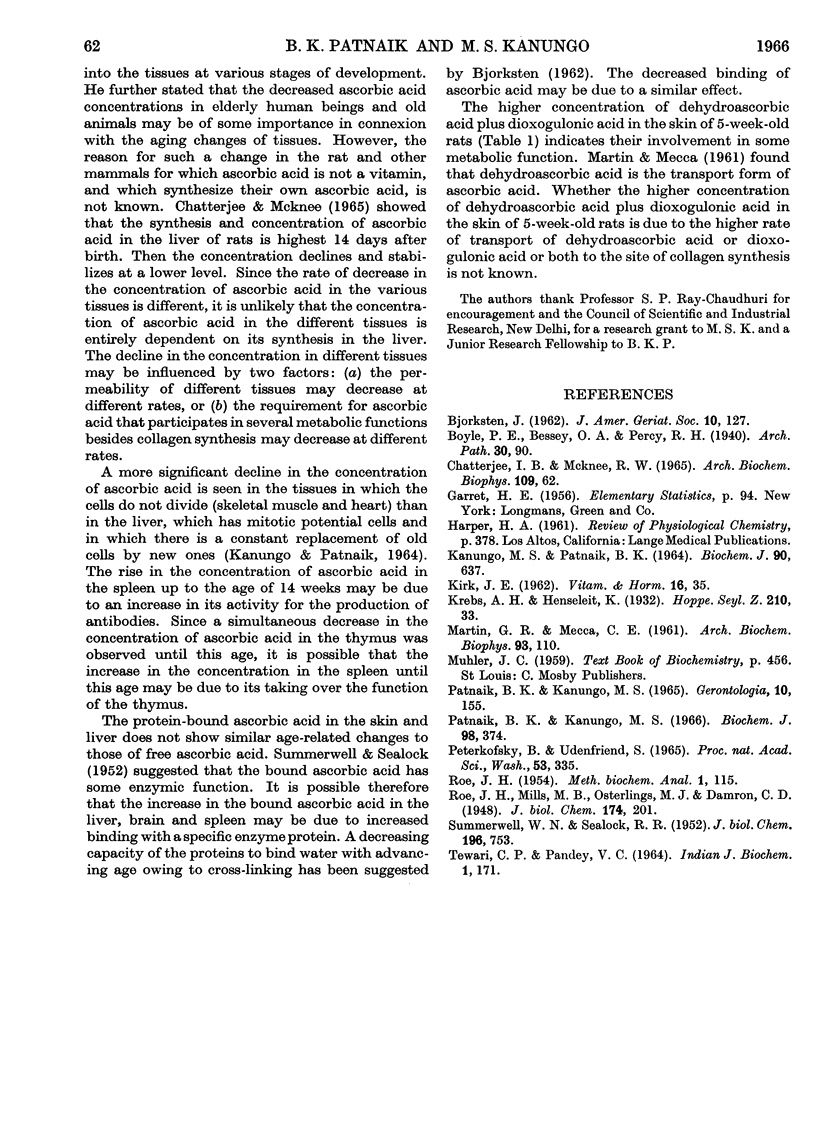Abstract
1. The uptake of ascorbic acid in vitro by the teeth of rats showed a gradual decrease with age, indicating that the uptake may be related to collagen synthesis as in bone. 2. The concentration of total free ascorbic acid in various organs declined with age, but the rate of decline was different in different organs. In the spleen, however, it increased until maturity and then declined. 3. This decrease may be due to one or both of the following reasons: (a) the permeability of different tissues may decrease at different rates for ascorbic acid, or (b) the requirement for ascorbic acid may decrease at different rates. 4. The bound ascorbic acid declined with age in the skin, kidney, liver and brain after the age of 10–12 weeks, and in the spleen after the age of 26 weeks. 5. The concentration of dehydroascorbic acid and dioxogulonic acid declined with age in the skin.
Full text
PDF



Selected References
These references are in PubMed. This may not be the complete list of references from this article.
- CHATTERJEE I. B., MCKEE R. W. BIOSYNTHESIS OF L-ASCORBIC ACID IN RAT LIVER MICROSOMES: INFLUENCES OF AGE, SEX, DIETARY CHANGES, AND WHOLE-BODY X-IRRADIATION. Arch Biochem Biophys. 1965 Jan;109:62–67. doi: 10.1016/0003-9861(65)90287-0. [DOI] [PubMed] [Google Scholar]
- Kanungo M. S., Patnaik B. K. Ascorbic acid and aging in the rat. Uptake of ascorbic acid by skin and bone marrow, and its concentration in various organs. Biochem J. 1964 Mar;90(3):637–640. doi: 10.1042/bj0900637. [DOI] [PMC free article] [PubMed] [Google Scholar]
- MARTIN G. R., MECCA C. E. Studies on the distribution of L-ascorbic acid in the rat. Arch Biochem Biophys. 1961 Apr;93:110–114. doi: 10.1016/0003-9861(61)90321-6. [DOI] [PubMed] [Google Scholar]
- PATNAIK B. K., KANUNGO M. S. EFFECT OF AGE ON THE UPTAKE OF ASCORBIC ACID BY THE SKIN AND THE BONE OF THE RAT. Gerontologia. 1964;10:155–160. doi: 10.1159/000211402. [DOI] [PubMed] [Google Scholar]
- PETERKOFSKY B., UDENFRIEND S. ENZYMATIC HYDROXYLATION OF PROLINE IN MICROSOMAL POLYPEPTIDE LEADING TO FORMATION OF COLLAGEN. Proc Natl Acad Sci U S A. 1965 Feb;53:335–342. doi: 10.1073/pnas.53.2.335. [DOI] [PMC free article] [PubMed] [Google Scholar]
- Patnaik B. K., Kanungo M. S. Metabolic changes in the skin of rats of various ages. Oxygen consumption and uptake of glucose. Biochem J. 1966 Feb;98(2):374–377. doi: 10.1042/bj0980374. [DOI] [PMC free article] [PubMed] [Google Scholar]
- ROE J. H. Chemical determination of ascorbic, dehydroascorbic, and diketogulonic acids. Methods Biochem Anal. 1954;1:115–139. doi: 10.1002/9780470110171.ch5. [DOI] [PubMed] [Google Scholar]
- SUMERWELL W. N., SEALOCK R. R. The determination of bound ascorbic acid in liver tissue. J Biol Chem. 1952 May;196(2):753–759. [PubMed] [Google Scholar]


